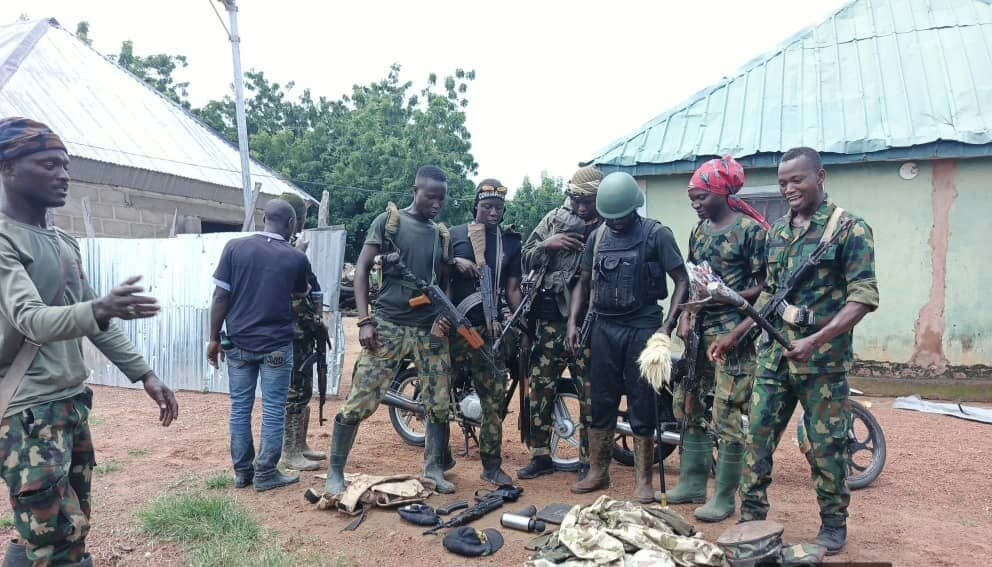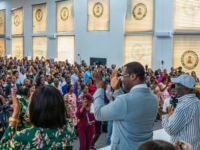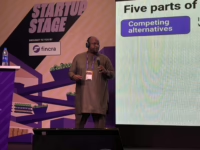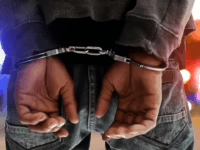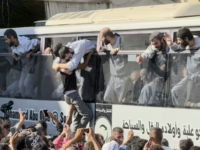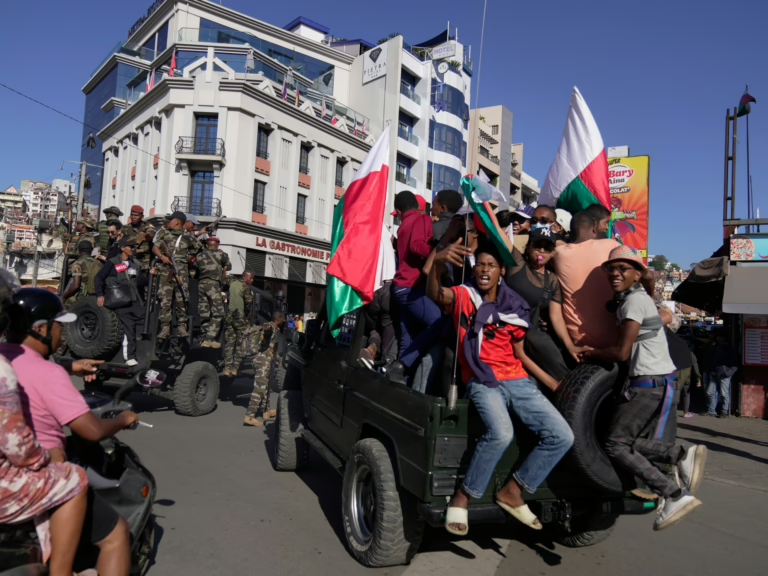Antananarivo, Madagascar – On a calm Sunday morning in Mahamasina, a neighborhood on the outskirts of Madagascar’s capital, Sarobidy Ramarimanana stood in line at her local water distribution point just after dawn.
“I intended to fill my jerrycan quickly and head to church,” she shared. “But as I was about to collect water, people suddenly started sprinting; jerrycans were scattered everywhere.” The blaring police sirens shattered the morning’s tranquility, triggering panic among residents who scrambled to flee.
Weeks of mounting antigovernment demonstrations, coupled with a harsh crackdown that resulted in fatalities, have instilled a deep-seated fear in the community, Ramarimanana explained. People stumbled over their own jerrycans, leaving them strewn across the street. “I grabbed mine and ran too. I was terrified.”
The 22-year-old university student returned home, but with a sense of frustration simmering inside her. Years of frequent and prolonged interruptions to electricity and water supplies-sometimes lasting several days-had worn down the community’s patience, compounded by the government’s inability to improve these essential services.
Though she missed church that day, she later joined a vibrant protest at Independence Square nearby.
“How can they expect us to remain silent?” she asked, clutching a yellow jerrycan and a small tin lamp known locally as “jiro-kapoaka”-both have become potent symbols of defiance among young demonstrators.
“We collect water in darkness, endure power outages, and yet they tell us to be patient? For how much longer?”
Since September 25, the streets of Antananarivo have been filled with hundreds of protesters, primarily led by the youth movement “Gen Z Madagascar.” What started as frustration over persistent utility failures quickly escalated into widespread dissatisfaction, with calls for President Andry Rajoelina’s resignation.
Protesters have blocked roads with burning tires and debris, while police responded with rubber bullets, stun grenades, and tear gas.
The United Nations reports at least 22 fatalities and numerous injuries amid the unrest.
In response to the growing turmoil, Rajoelina attempted to quell dissent by dissolving his government and pledging to appoint a new prime minister. However, delays and the selection of a military general for the role sparked further outrage among youth activists, who viewed this as a mere reshuffling of the same entrenched power structure.
The weekend saw the largest protests yet, met once again with a forceful police crackdown.
‘A Fight for Survival’
Jose Raharimino, a 31-year-old freelance photographer, does not usually participate in protests nor consider himself politically active. Yet, when his apartment lost power on Sunday morning, he decided to head to Independence Square.
“I wanted to capture what was unfolding,” he said, camera slung over his shoulder and a jerrycan resting nearby.
“Initially, I planned to stay on the sidelines-just observe and snap a few pictures.”
On Saturday, a specialized military unit formerly allied with the president, known as CAPSAT, defected and pledged support to the protesters.
This shift infused the atmosphere with cautious optimism early Sunday-chants rose, nervous laughter echoed, and the aroma of freshly fried “mofo gasy,” a traditional Malagasy donut, wafted from a nearby vendor.
“We weren’t angry yet. We were desperate, but united in that desperation,” Raharimino recalled.
As the day progressed, he began livestreaming the events on his phone. “I wanted the world to see that we’re not violent, just exhausted.” The crowd grew to include vendors, students, office workers, mothers balancing babies and jerrycans alike.
“This isn’t about politics,” he told a fellow observer. “It’s about survival.”
However, hope quickly faded when tear gas canisters were deployed. “At first, people stood their ground,” Raharimino said. “Then more canisters were thrown.”
He witnessed the smoke spreading, eyes burning, camera trembling in his hands. Though coughing, he kept filming. “People screamed-not from pain, but from fury. Someone near me shouted, ‘Why are you attacking us? We only came for water!'”
Police advanced, dispersing the crowd into side streets where protesters clutched their jerrycans and hid behind walls. Raharimino sheltered behind a kiosk, helping a young man wash his eyes with bottled water.
“It felt like reliving 2009,” he murmured, recalling the antigovernment protests that led to Rajoelina’s rise to power through a military coup.
Sixteen years later, the military and government faced another standoff-CAPSAT, once instrumental in Rajoelina’s ascent, now opposing his regime.
Among the throngs on Sunday were seasoned protesters and newcomers emboldened by CAPSAT’s defection.
Rajoelina denounced the military’s move as an unlawful coup and disappeared from public view. By Tuesday, parliament voted to impeach him for abandoning his duties.
The military has since assumed control, establishing a transitional committee with promises to restore civilian governance swiftly.

‘A Call for Systemic Change’
The swift political shifts sparked celebrations across the city, with images of soldiers and civilians united in hopes of a brighter future.
Yet beneath the surface, anxiety lingers.
“I can no longer stand by and watch the same issues persist-corruption, poverty, unemployment, and stagnation,” said Henintsoa Andriniaina, 24, speaking from Independence Square.
An entrepreneur from Isotry, Andriniaina sells hand-painted tote bags online, a business heavily reliant on electricity, which he now regards as a “luxury.”
“Without power, I can’t print or sew, nor charge my phone to share new designs. Without water, I can’t clean my brushes,” he explained.
“We’re not idle youths chanting slogans. We’re people striving to survive.”
At the protest, he carried a sign reading “Miala Rajoelina! Mila rafitra vaovao! Tsimbazaza miray!”-translated as “Rajoelina out! We need a new system. Tsimbazaza united.”
“This wasn’t just a call for one person’s resignation,” he said. “It represents everyone exhausted by this endless cycle. ‘Mila rafitra vaovao’ means rebuilding from the ground up: new institutions, equitable leadership, and a system that genuinely serves the people. ‘Tsimbazaza miray’ symbolizes unity-youth, workers, vendors-all standing together for change.”
Andriniaina emphasized the necessity of structural reform and accountability. “We need leaders who serve, not exploit,” he asserted. “True change requires systems that endure beyond individuals-transparent budgets, equal opportunities, and power vested in citizens, not offices.”

An Uncertain Road Ahead
During the intense police crackdown on Sunday, Raharimino captured as much footage as possible before authorities confiscated his phone.
By early afternoon, Independence Square was engulfed in smoke, sirens, and chaos, evoking memories of the 2009 protests. “I was just a teenager then. I remember the fear vividly,” he reflected.
He returned home hours later, eyes red and hands trembling. “This isn’t about politics,” he reiterated. “It’s about the fundamental right to live with dignity-the right to wake up knowing the lights will be on.”
Raharimino believes that transparency and visibility are vital for progress. “If we cannot speak out, record, or reveal what’s happening, nothing will change,” he said. “Change begins when truth flows as freely as water-without fear or silence.”
Nearby, Bako, a 56-year-old street cleaner who goes by a single name, watched the protests from a distance, the smoke from burning tires drifting over Antananarivo’s skyline.
“I’ve witnessed this before,” she said softly, voice trembling. “In 2009, we shouted too. My husband went to the protests. He never returned.”
Tears welled in her eyes as she gestured toward the stadium. “Now, it’s the children of those who protested then. And they’re crying again.”
Wiping her tears, she added, “I don’t blame them. I cry for them. Because they want what I wanted too-just a little dignity.”
As night fell, the sounds of gunfire mingled with chants and the hum of generators sputtering back to life. Dozens were arrested, and rumors swirled about resignations and military tanks near the presidential palace.
By Monday morning, it was confirmed: President Rajoelina had stepped down, and the military had assumed control. Some hailed this as liberation; others feared a dangerous repetition of history.
“What comes next is uncertain,” said Luke Freeman, a Madagascar specialist at University College London.
“For the Gen Z protesters who ignited this movement, their egalitarian approach may now challenge them. To influence political decisions and shape Madagascar’s future, they’ll likely need to appoint leaders and representatives,” he explained.
“They’re transitioning from social and human rights activism into the complex realm of political negotiation, where coalition-building is essential. They must fight to maintain their voice in this process.”
For the young people in the streets, access to reliable water and electricity is not a favor but a fundamental right, Ramarimanana emphasized.
Whether the military takeover will usher in meaningful change remains to be seen. For Ramarimanana, it is neither a triumph nor relief, as dignity has yet to be restored.
“We cannot dream of democracy if we cannot drink clean water. Change begins when every household has what it needs-not empty promises, but functioning pipes and steady lights,” she said.
Amid the debris of defiance and despair scattered across Antananarivo’s streets, Ramarimanana gazed down at her worn yellow jerrycan, still empty and waiting to be filled.
“We didn’t ask for power. We wanted water. We wanted light,” she whispered. “Maybe now, they’ll listen. Or maybe… they’ll forget us once again.”




